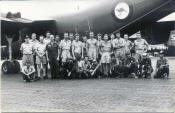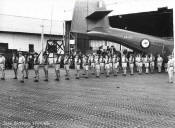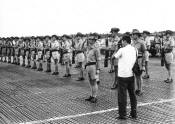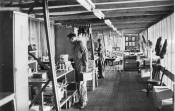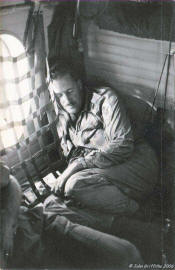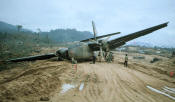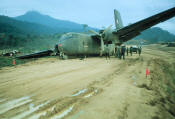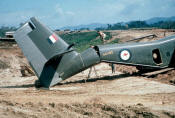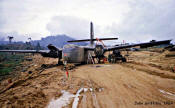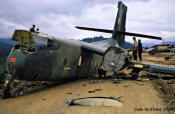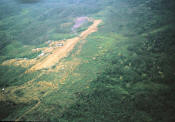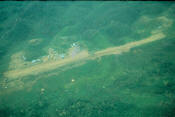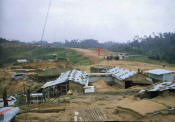 Royal Australian Air Force
Royal Australian Air Force 
Caribou
(DHC-4)
Newest data is shown in red March 17, 2018
RAAF TRANSPORT FLIGHT VIETNAM (RTFV)
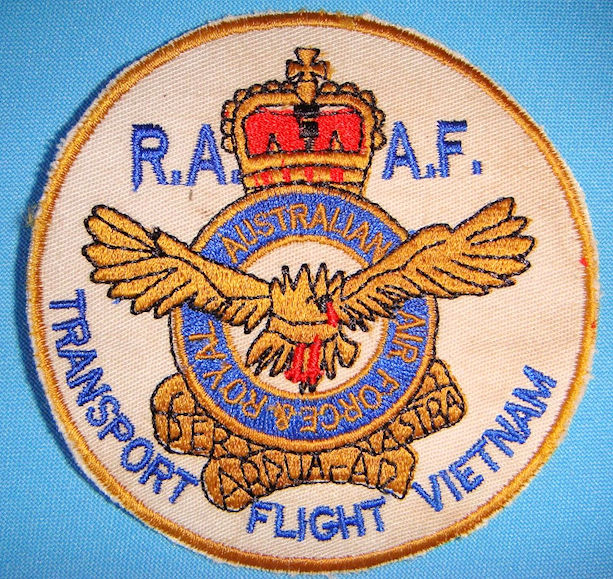
| Australia's involvement in the Vietnam war
began in 1962 with the sending Army advisors to the country. With
the arrival of the RAAF new DHC-4 Caribous the RAAF Transport
Flight Vietnam was formed on July 21, 1964. The unit was based Vung Tau in Phuoc Tuy Province (48 miles south-east of Saigon). The first three Caribous (A4-171, A4-179, A4185) arrived on August 8, 1964 from a flight from Butterworth, Malaysia. On August 29, 1964 three more Caribous (A4-173, A4-191, A4-193) arrived directly from Canada. Vietnam bound Caribou crews and ground support crews were trained at the 38 Squadron at RAAF Base Richmond, New South Wales. They used the call sign "Wallaby Airlines". The RTFV became the 35 Squadron on June 1, 1966. |
| Caribou ID | Date of Service |
| A4-171 | 08/64 - 08/67 |
| A4-173 | 08/64 - 02/72 |
| A4-179 | 08/64 - 02/72 |
| A4-185 | 08/64 - 11/64 |
| A4-191 | 08/64 - 06/71 |
| A4-193 | 08/64 - 03/70 |
| A4-208 | 06/65 - 02/72 |
| A4-210 | 03/65 - 07/68 |
| Note: A4-185 was written off in Vietnam | |

|
The following photos were provided by John Griffiths. John was a Sergeant in charge of the Radio Service shop for the RTFV from October, 1964 to April, 1965. |
||
| <<< The RTFV workers at Vung
Tau, John is the last one on the left at the back. Note the U.S.
Army Mohawk in the background. >>> John is the last on right in back row of RAAF Transport Flight Members. That is A4-193 in the back |
||
| John is at the other end of the line at this parade.
|
||
| <<< That's John checking out the Vung
Tau RAAF workshops. >>>After a hard day at the office. |
||
|
A4-185 (cn # 185) was the first Australian DHC-4 to be written off in Vietnam. On November 18, 1964 at A Ro, A4-159 was tasked to drop supplies that failed due to parachute extraction malfunction. The supplies were needed by the U.S. Forces so the pilot elected to put the Caribou down at the drop zone. The unprepared strip was 1,800 feet long by 60 feet wide, with the mid point just 40 feet wide. Reverse thrust was used during the landing roll which threw mud onto the pilots windows, obscuring their vision. The Caribou drifted to the right, the starboard main gear sunk into the soft mud and tore the right landing gear off. The aircraft was written off and dismantled on site and removed. The front fuselage section remained at A Ro and was used as an observation post. |
||
| The pink haze above the aircraft in both the aerial views is a smoke grenade to show the wind direction as the retrieval crew, including me, arrived by helicopter the next day. We went on to retrieve the port engine and any internal parts that could be usefully salvaged to use as spares. | ||
|
In this view of
the camp the buildings were the accommodation etc for the dozen or
so Americans and 1 Australian Army Warrant Officer who lived there
and the sandbagged structure in the immediate foreground is sleeping
quarters, a bit more mortar proof than the other iron roofed
buildings |
||
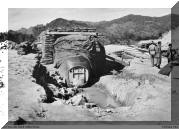 |
<<<
A4-185 nose was used as an observation post
(Australian War Memorial) >>> A4-185 rear section was used as a storage box |
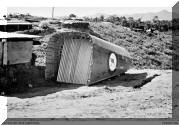 |
| You are on RAAF Caribou Section 2 - page 1 | ||
| Return to previous page | Return to Caribou index page | Next page |
